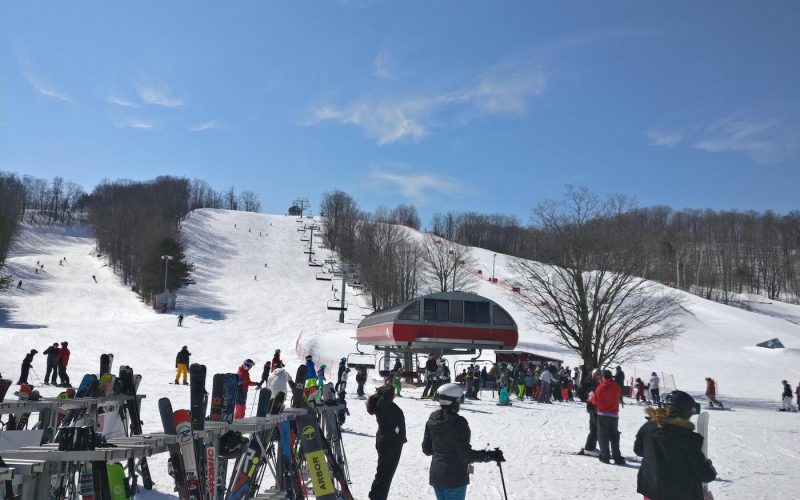When you’re snowboarding or skiing, you’re just using the force of gravity to go down while on a plank of wood. Looks and sounds pretty harmless and environment-friendly right? Not exactly. When you zoom out, you can see the true environmental and sustainability factors of the ski industry. No there are no coal plants in ski resorts. What I mean is, there are lots to improve; some/most of them are currently being attended to, but we still have a long way to go.
This article is not about pushing down the industry (why would I? I love snowboarding!) but this is about being real, being honest, and being a responsible human being. Most of us skiers and snowboarders try to fight climate change in our own ways since snow relies on proper weather. We’re working through our own problems (things to improve in the industry) while also being politically and environmentally active. But as the general knowledge goes: “you can’t fight what you don’t know or what you can’t see”. By that I don’t mean throwing fists to CO2 molecules! I meant, you can’t tackle a problem if you can’t identify or list down your targets so you can check them off one by one.
There are lots to cite, so let’s go for the first one:
Location and Transportation
Ski resorts are on mountains. People are usually from cities or major towns. Most towns are away from the mountains (unless you live in ski towns), so the problem number one for skiers is that: “we gotta get there” first. And to do that, yup, transportation. It doesn’t help that they’re far so the mileage is a noticeable ding. It also doesn’t help that there’s only so many ski resorts worldwide.
In any town or city, there are only so many ski resorts near you. In Toronto, I can think of around…~more than 5 but technically there’s only 2-3 that I go to. If and when you get tired of them, you’ll probably make plans to have trips with friends and most of the time to make it worthwhile, you’d probably fly somewhere.
Planes are a big contributor to CO2 emissions. Can’t argue though if there’s an ocean between you and your destination.
So as you can see, the industry didn’t create a new pollutant. It’s just that it’s riding (ha) on current transportation emission challenges we have.
Power / Heat Generation
Skiing and snowboarding are winter sports. Like any winter countries, people need heating. So again, this isn’t specific to the ski industry. This has always been the challenge of winter countries.
On top of that, you have the machineries and equipments for a ski resort to happen. You have the ski lifts (the large seat in a carousel carrying you to the top) and the grooming machines.
Paradoxically–and this is my opinion–the ski lifts are the (relatively) easiest machinery to power by any renewable energy. It’s just doing this one repetitive thing in a constant cycle and it’s not like you need to rev it up like airplane takeoffs or speeding a car. I’m basing this with the many docs I’ve watched.
This is the (relatively) low hanging fruit that ski resorts tackle. This is a new machinery that the industry has created and that they are responsible for. The good news is that ski resorts are actually doing good progress so far by making lifts use green energy. Another example is that Wolf Creek has been green since 2006. The challenge here is that there can be multiple lifts per ski resort (so there are more things to power) and not all ski resorts are positioned (geographically, financially, etc) to harvest renewable energy even if they wanted to.
For the grooming machines, it’s ironic that the machine that’s supposed to preserve snow (they’re technically meant to shape and style the snow) is also an emitter itself. There’s also good news here since there are actually hybrid grooming machines out there. The con is that it’s expensive so only the top ski resorts usually have it.
Edit: News of Hydrogen-powered snow groomers are here for 2021!
It’s just a technological and physics challenge for this guy. You have a big object that carries a lot of weight, so you need to exert lots of force to bring it up the slope 😕 …with friction.
Board Manufacturing
The most seemingly harmless equipment…is actually also guilty. Why? Well inherently, the snowboard is harmless but due modern tech, a ski/snowboard’s composition is actually barely made of wood! There’s lots of plastics and metals in there! I can’t find the video, but it’s an environmental concern because it takes a lot of energy to create a snowboard (think bending materials). The materials in itself can be…unsustainable. Actually there you go, that’s the word I was looking for. It’s not that snowboard manufacturing emits a lot of CO2, it’s just that the product can be unsustainable if it gets out of control. First you have to cut trees 🤭 then the other material is a mix of rubber and plastic 😕, the adhesive too is a concern but again I can’t remember which video I was watching…
BUT again, the industry is actually on top of these things. If you think about it, they’re doing pretty good for machineries and equipments that they create. Besides, environment and sustainable is a hot topic for the ski/snowboard brands for very obv reasons. The world’s leading snowboard brand (think the Apple of snowboards–both for better and worse lol) Burton has been making their products sustainable left right and center. Jones, a top freeride brand, is putting sustainability and environment as their priority. And I’m sure there are many more. It’s just that I have boards from those brands and I love ’em 😍 . I’m sure most brands are doing the same.
Apparel / Soft Goods Manufacturing
You probably weren’t expecting this. Yea…the winter apparel is also a concern. Same like snowboarding, it’s not much of an emission problem, but more of a sustainability problem.
So again, winter. Winter > cold > need heat > lots of materials needed in that jacket to keep you warm. Winter jackets (fashionable jackets for casual use during winter) is separate (although they have their own challenges).
The good(?) news is that for activewear jackets (e.g.: ski/snowboard), is that you don’t have those animal materials (e.g.: fur, down). It’s heavy, it doesn’t really trap heat much, it’s another source of friction, etc. For ski/snowboard jackets what you’re looking for are:
- waterproof
- windproof
- but at the same time breathable and moisture wicking
- but also traps heat (with the least material possible, because remember, it’s tiring lol)
So there isn’t much direct environmental concern here, it’s just that it’s very intricate and labour/material/tech intensive (so that’s more energy). Snowboard jackets are some next level 💩 (as you can see I’m slowly using the Touch Bar). They have multiple layers with different functions and they’re not puffy at all like casual winter jackets so it’s amazing to feel those properties above in such a compact (and cool-looking) jacket. If you have top shelf jackets, they have a Gore-Tex layer on top (basically Teflon) and it accomplishes all those properties above, 10/10 yet your jacket is still (relatively) thin.
Again, not much concern up until this point. Here’s where I think it gets ugly:
It’s apparel. It’s part of the fashion world. In fashion there’s a trend (ha) of disposability and ‘always-with-the-latest’. Trends come and go and like shirts and jeans, you can get into the habit of purchasing a new one and discarding an old one just for the sake of fashion (even if there’s completely nothing wrong with your jacket!). First, that’s a lot of money. Snowboard jackets can easily touch the $400CAD mark! so imagine cycling through that annually?! My other problem with this is that it’s expensive because there’s been a lot of material and work done on that one item. If people are going to be cycling through it fast and unnecessarily discard it…it’s just a waste of a lot of things :/ human labour including.
Also, a quick scroll through my insta, you can see Dano rockin’ the orange jacket for the longest time (5 years actually).
Like snowboards, the softgoods brand know they affect and they have a responsibility for the environment. They’re doing what they can. Brands like Patagonia, and The North Face are leading the charge on this, to name a few.
Demand (due to its own success)
This last one is just the compounding effect of it all: the bigger the mountain, the more popular and more visitors. The more visitors, the more staff you’d need; the more popular it is (and you need it to be, for the money), the more the problems above are multiplied.
Wrap Up
The ski industry’s no saint on the matter. Actually no one is free of responsibility when it comes to the environment and sustainability. I highly highly suggest still of course that everyone try skiing and snowboarding. For example, this article talks about the benefits of snowboarding. This is not an attempt to shame the industry that I love but more so of just being real and honest and not being a hypocrite about it. We just have to be more aware as we participate and we have to play an active role on this like Protect Our Winters so that generations after us can still recognize and enjoy the sport.



